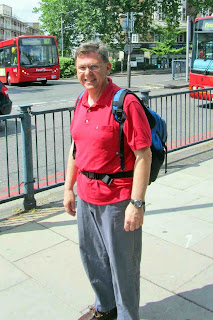Delhi’s Domestic Airport: I arrived in India at the new international air terminal (built in time for the Commonwealth Games), which is fantastically modern. I am now at domestic terminal 1 because I am flying to Mumbai. I expected to arrive at a dingy old terminal, but it is totally modern, better than some US airports (LAX comes to mind, dingiest terminal in the US). There is a laptop station, free wifi connections, a mobile charging station, high-end boutiques (e.g., William Penn The World Pen Store), lots of places to sit, and air-conditioning. “Voted 4th best airport in the world” said one placard. Security is as tight as in the U.S., with separate lanes for men and women. Everyone gets a pat-down. The Indians here are not the same ones as I see on the streets in Karol Bagh, though the women are wearing their saris. Traditional dress among the men is rare. The airline I am flying is called SpiceJet. The man I was talking to this morning said that English is the only language that all Indians speak (at least a little, and I know he was exaggerating). In fact, he said that 20,000 taxi drivers and police were trained in English for the Commonwealth Games last year. And now, the preferred accent is the American accent. “It is considered to be sexy,” said he, “especially compared to the British accent.” I later learned he was a Tamil, hence not a native Hindi-speaker; clearly, he prefers English over Hindi. As I reflect on it, modern India, educated India, economically prosperous India is entirely English speaking. India is an English-speaking nation as far as the rest of the world is concerned. The language was supposed to have been supplanted by Hindi as the language of post-colonial nation-building. But English never disappeared and, in fact, hauled into the 21st century no ethnic baggage (in contrast to Hindi, the tongue of the north Gangetic Plain. Granted, English was stained by colonialism, but that was two generations ago. So much has changed. English has emerged as the language of Indian nation-building.
The drive to the airport was relatively smooth, though we did meet a few cars going the wrong way on the divided highway (happens all the time) and, of course, no one pays any attention to the lane dividers. At one point, if the window had been open I could have reached out and petted the three cows that were mooning the passing cars. This highway brings arrivals right into Delhi where they meet a roundabout with new sport-themed mosaics to welcome guests arriving for last year’s competition, now a permanent and prideful part of the landscape. The Indians seem to have really used the 2010 Games to give themselves an excuse to modernize and aestheticize a bit.

Mumbai: In case you didn’t know, Bombay is now Mumbai. Still, you hear people here using ‘Bombay’ frequently. My 2011 list shows the supermetropolitan area to be the home of 23.3 million people, making it 5th largest in the world. Surprisingly, my list gives the Delhi metro a larger population. Coming in from the air, Mumbai looks like a real city with a New York-style skyline. While New York is centralized on an island, Bombay is centralized on a peninsula. Space is at a premium in both. Most people know that the world’s largest film industry is located here: Bollywood. One of the first billboards I noticed hawked the evening TV show Bollywood Tonight. That has a familiar ring, doesn’t it?
Also on view from the air and from street-level are the shanty-towns. They seem to be patch-worked into the overall settlement fabric: a tract of high-rise apartments, then a track of wall-to-wall shanties. Even along the sidewalks people live in one-room dwellings. In this city, there are really three Indias, up from the two Indias people spoke about decades ago. Rather than a poor majority and a rich minority, India now adds a growing middle class. My friend on the plane today told me that India would be among the strongest economies on earth in the near future, that India had the ability to solve its problems because it was a democracy, and that one day Pakistan might even want to join India (as it was pre-independence). It would take a generational shift, he admitted. I must say there is a profound sense of optimism here. Now, if this country could just muster the energy to clean itself up. Indians are great engineers and builders, but once a building, road, sidewalk, or park is built, no maintenance is provided. Everything nice tumbles down quickly. It the country could harness some of its unexploited labor as maintenance crews, its cities would be more functional and attractive (as some parts of every Indian city already are).

My afternoon visit to Juhu Beach today made me feel bad. It is strewn with trash and looks very uninviting. I returned in the evening when the sun had set. No longer could you see the trash, but you could see throngs of people, vendors, carnival rides for the kids, and a few in the water. I’ll try to store my evening experience on my hard drive and delete my afternoon memories.
Geographically yours,
D.J.Z.

























